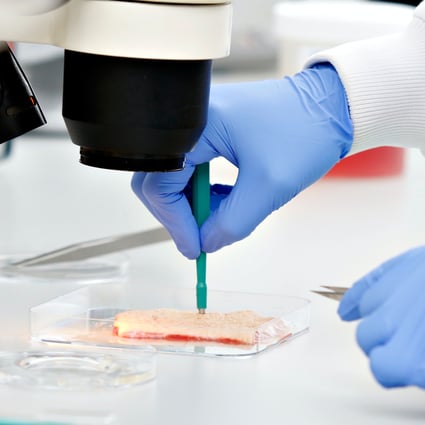Pulmonary Artery tone
Drug Discovery Assay – reference number: B110
This assay determines whether test articles affect the function of human pulmonary arteries (contraction or relaxation). Several reference compounds can be used dependent on the functional endpoint. The pulmonary arteries carry deoxygenated blood away from the heart to the lungs. Changes in blood flow and vascular tone can greatly affect other blood vessels in this system.
| Assay Type: | Blood Vessels |
| Tissue: | Human Pulmonary Artery (Healthy) / Human Pulmonary Artery (Healthy – Denuded) |
| Target: | Muscarinic Receptors/ Angiotensin receptor/ Nitric oxide donor/ Endothelin receptor/ Prostacyclin receptor/ Prostaglandin EP2 receptor/ Prostaglandin EP4 receptor/ Beta adrenergic receptor |
| Control Compound: | Acetylcholine/ Angiotensin II/ Sildenafil/ U46619/ Endothelin-1/ Iloprost/ Bosentan |
| Study Type: | Organ bath |
| Functional Endpoint: | Contractile force/ Contraction/ Relaxation/ Vasoconstriction/ Vasodilatation |
Testing Information
Introduction
The specific results that will be provided are the effects of increasing concentrations of test articles on the contraction or relaxation of human isolated pulmonary arteries.
Test Article Requirements
Test article(s) to be provided by the Sponsor in storable aliquots at required test concentrations with information on diluent vehicle used. Stock solutions are prepared in distilled water unless otherwise requested. Bath volumes are 5mL; sponsor to provide sufficient test article to run the entire study.
Suggested Testing
Cumulative concentration response curve to test compound, vehicle and positive control in duplicates
Study Outline
Rationale and Experimental Design
The experiment assesses whether test articles cause tonal changes in human pulmonary arteries compared with a reference compound.
Exclusion Criteria
Donor exclusion criteria can be set up as per client requirements for example no COPD or asthmatic donors. Furthermore, tissues which do not respond to the standard pharmacology checks will be excluded.
Standardization and Qualification
All individual vessels are initially processed through standardization and qualification procedures to ensure functionality, prior to starting the study protocol.
Vessels are processed through a standardization procedure to reduce signal variability prior to pharmacological intervention. This ensures that vessels are maintained under appropriate physiological tension throughout the experiments.
Following standardization, vessels are “woken up” by successive high potassium salt solution challenges with washes and recovery periods following each challenge. This process standardizes the basal resting tone and ensures robust contractile responses.
Vessels are then challenged with an appropriate vasoconstrictive agent before endothelial function is assessed by the addition of the appropriate endothelial dependent vasorelaxant agent. Test tissues are then washed, and the responses allowed to return to baseline.
Vessels which pass the standardization and qualification pass/fail criteria will then progress to the study protocol.
Agonist Constriction Assays
Option 1 − IC50 Determination
To assess the ability of each item to antagonize an agonist mediated vasoconstriction response, 6 point cumulative concentration response curves (CCRC’s) will be performed for each test article. These CCRC’s will be performed following pre-constriction with an appropriate vasoconstrictive reference agonist. A positive control compound and vehicle CCRC will also be run to allow direct comparison with test articles.
An example of the conditions assessed for 3 test articles are detailed below (each condition will be run in duplicate vessels):
- Vehicle CCRC
- Test article 1 CCRC
- Test article 2 CCRC
- Test article 3 CCRC
- Positive control CCRC
Option 2 − pA2 Determination
To assess the ability of a test article to antagonize an agonist mediated vasoconstriction response; 6 point cumulative concentration response curves (CCRC’s) will firstly be performed for the vasoconstrictive reference agonist.
Following a wash out and recovery period, vessels will be incubated with the test article ( different concentrations of test article can be assessed), positive control or test article vehicle before the same 6 point cumulative concentration response curve will be repeated for the reference agonist.
An example of the conditions assessed for 3 test articles are detailed below (each condition will be run in duplicate vessels):
- Representative test article vehicle
- Test article 1 concentration 1
- Test article 1 concentration 2
- Test article 1 concentration 3
- Test article 2 concentration 1
- Test article 2 concentration 2
- Test article 2 concentration 3
- Test article 3 concentration 1
- Test article 3 concentration 2
- Test article 3 concentration 3
- Positive control
Agonist Relaxation Assays
Option 1 − IC50 Determination
To assess the ability of each test article to antagonize an agonist mediated vasorelaxation response, 6 point cumulative concentration response curves (CCRC’s) will be performed for each test article. These CCRC’s will be performed following pre-constriction and relaxation with an appropriate vasorelaxant reference agonist. A positive control compound and representative test article vehicle CCRC will also be run to allow direct comparison with test articles.
An example of the conditions assessed for 3 test articles are detailed below (each condition will be run in duplicate vessels):
- Representative test article vehicle CCRC
- Test article 1 CCRC
- Test article 2 CCRC
- Test article 3 CCRC
- Positive control CCRC
Option 2 − pA2 Determination
To assess the ability of a test article to antagonize an agonist mediated vasorelaxation response; 6 point cumulative concentration response curves (CCRC’s) will firstly be performed for the reference agonist, following pre-constriction with an appropriate vasoconstrictive agent.
Following a wash out and recovery period, vessels will be incubated with the test article (3 different concentrations of test article will be assessed), positive control or test article vehicle before the same 6 point cumulative concentration response curve will be repeated for the reference agonist.
An example of the conditions assessed for 3 test articles are detailed below (each condition will be run in duplicate vessels):
- Representative test article vehicle
- Test article 1 concentration 1
- Test article 1 concentration 2
- Test article 1 concentration 3
- Test article 2 concentration 1
- Test article 2 concentration 2
- Test article 2 concentration 3
- Test article 3 concentration 1
- Test article 3 concentration 2
- Test article 3 concentration 3
- Positive control
Supplementary Options
To assess the involvement of a specific receptor subtype in any observed responses, the concentration of test article eliciting the largest response can subsequently (following a wash out and recovery period) be tested in the presence of a specific antagonist. This supplementary option will incur an extra charge.
Analysis
Responses shall be expressed either in mili newtons or grams tension, or as a % of the maximal contractile response (e.g. KPSS). Statistical analysis (where appropriate) will be performed using GraphPad Prism, with the results being shown in graphical form in the final report.





![Wire myography: the ultimate guide [protocol included]](https://www.reprocell.com/hs-fs/hubfs/REPROCELL-04.06.18_0163.jpg?width=756&height=425&name=REPROCELL-04.06.18_0163.jpg)